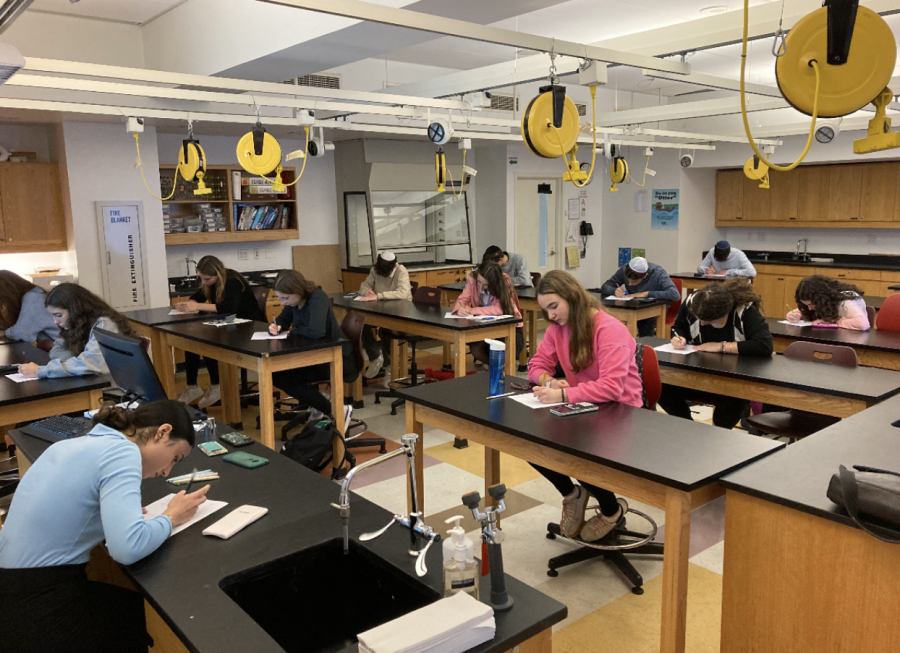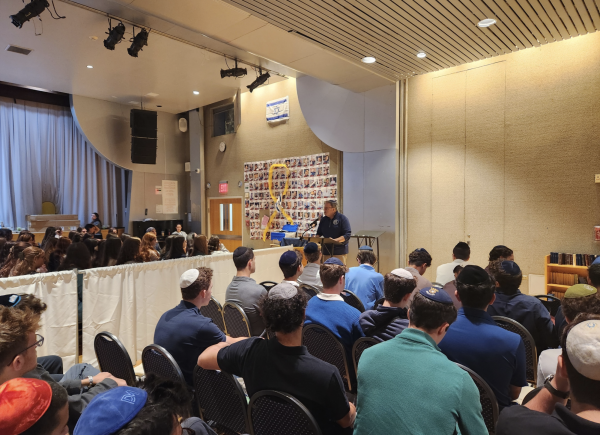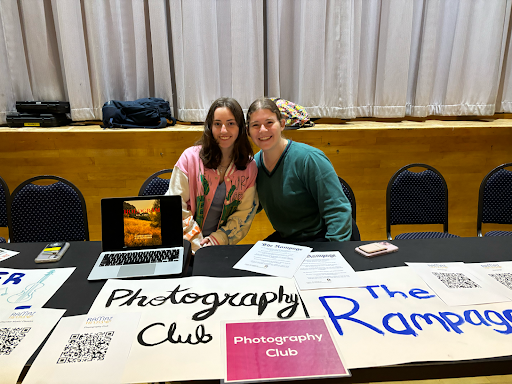The “Times” They Are A-Changin’
After years of debate, the Ramaz Upper School implemented a sweeping and controversial policy change for the 2022-23 academic year: extended-time testing for all students. This new policy elicited varied reactions throughout the student body, faculty and administration. This change was on the docket for quite some time, even prior to the academic disruptions caused by the COVID-19 pandemic, but was ultimately implemented this school year.
In prior years at the Ramaz Upper School, if a student did not qualify for extra-time testing, that student received forty minutes to complete a test that was intended by the teacher to be completed in forty minutes. However, a student that qualified for extra-time testing would be allowed sixty minutes to complete that same forty-minute test, or twenty minutes of “extra time.” Following the implementation this year of the universal extra-time testing policy, every student at Ramaz Upper School is allowed sixty minutes to complete a test that is intended by the teacher to be completed in forty minutes.
In prior years, to have qualified for extra time, a Ramaz student was required to undergo a meticulous neuro-psyche or other medical evaluation documenting the reasons for the extra time. This was not a standardized process across all students but one that was appropriately unique to that particular student’s needs. The evaluation results were submitted to a committee of Ramaz faculty to subjectively determine whether the student in question should receive the requested accommodation.
There was a growing sense among the Ramaz administration that with so many extra-time requests to assess, it was becoming too unwieldy, time-consuming, and complex to manage the needs of every single student. Rabbi Schiowitz expressed that while there were “black and white cases,” it was “an enormous strain on the people that were reviewing every single case, and sometimes it didn’t feel fair to people who didn’t qualify…it wasn’t always obvious where to draw the lines.”
Ms. Webb added: “They wanted to make it easier to implement because it was hard separating out the kids who get extra time and the kids who don’t, and it’s always very difficult to make the decision [about] who’s entitled to extra time [and] who isn’t.” The Ramaz administration also believed that a universal policy for extra-time testing would relieve testing anxiety among the student body, both for those who previously qualified for extra time and those who did not. Ms. Webb commented that “students have way too many things to be anxious over, and any way we can relieve that anxiety is a good thing.” Rabbi Schiowitz agreed that “all students benefit from having less intensive testing pressure…a lot of tests are not meant to be timed tests.”
The universal extra-time policy was not that disruptive to the flow of subsequent classes. It fit the day’s schedule by simply adding twenty minutes to the existing forty-minute testing period. The Ramaz administration was equally encouraged to implement this policy because SAR and Frisch had similarly broad application extra-time testing policy. Interestingly, when the new policy was communicated to the Ramaz parent body over the summer, the Ramaz administration received only a few comments and questions, but few complaints.
However, the policy and its applications are still being monitored, refined, and reviewed regularly by the administration with each given test. Rabbi Schiowitz stated: “The main challenge is getting everyone used to it and making sure we are getting all the data and having the chance to review it, and then follow-up.” To that end, the test proctor takes note of the time each student hands in their test to make sure that no test is inadvertently too long and straining the students who need the time to complete the exam. Rabbi Schiowitz explained that Ramaz is looking “to make sure that the tests are still forty-minute tests and they’re not just becoming one-hour tests.”
The jury is still out on whether this policy is having its intended effect of simplifying the process and reducing student anxiety. Ms. Webb points out that she’s heard both sides from the students. There are some students “who don’t think it’s fair because, for whatever reason, their test is still too long.” Other students remarked that “they like it because they could just sit there [in the test] as long as they want to, and their parents don’t have to go through the effort of getting a report for them and getting everything decided.”
As Ms. Webb noted, the policy has elicited strong reactions from the students, but not only related to whether the teachers are making longer tests to fit the full sixty-minute time slot. George Meyer ’26, a student who has had extra time since 5th grade and who said that extra time “benefited [him] while [he] was taking the test,” believes this policy is a positive development because he thinks “each kid should have the same amount of time and it shouldn’t be unfair to kids that don’t have extra time that probably need it but can’t get it.” Alex Sultan ’25, a student who has not had extra time testing while in Ramaz, appreciates the policy for a different reason. He believes that the policy levels the playing field among all students for test taking and prevents a situation that is “a little unfair to students who don’t have extra time and that suffered from not taking an extra timed test.”
Gianna Goldfarb ’25, a student who had extra time since 3rd grade but did not get extra time for all subjects in 9th grade after a drawn-out discussion with the faculty, believes that the universal extra time policy “is a bit unfair because it gives students who don’t need extra time an advantage to use all those extra minutes they have for going over the test…it’s basically giving them extra time that’s not time that they need.” Ultimately, if faced with the decision of revoking the policy or maintaining the new status quo, Gianna would vote to keep things as is, stating she “just wants [her] extra time” and is worried “that if it goes [away, she] might have to fight as hard as [she] did to get [her] extra time.”
Hannah Kanbar ’24 has not been an extra time student and has experienced proctors having to “rip the test out of [her] hands” because she was not finishing her tests on time. “[Now], even if I take my time, I’ll still probably have a few minutes [free] at the end, so I don’t feel rushed or stressed while taking the test,” said Kanbar ’24. The new policy is certainly positively impacting her, concluding that “the policy is great.”
Hallie Kopel ’24, a student with extra time, is concerned that “while no teacher has abused it so much” yet, the policy could eventually lead to the teachers making forty-minute tests “even a little bit longer because they know that they can” get rid of the extra time benefit “and hurt the extra time people.” However, Kopel ’24 acknowledges that this is a complex issue and “is fair because it gives every kid the same chance.”
Manie Dweck ’23, a student who has had extra time since the beginning of high school, also recognizes that it is not a clear-cut issue with obvious answers. Students who need the extra time shouldn’t be disadvantaged if the teacher makes a longer test and questions. “What’s the point of having extra time at all if everyone is getting extra time?” said Dweck ’23. The unintended consequence of the policy could result in “the people who don’t have extra time [doing] better” compared to a student who legitimately needs the extra time and ends up using it to “rush through it.”
Time will tell whether this new policy will be successfully implemented and maintained at Ramaz Upper School. For now, the debate among students, faculty, and administration draws many different opinions that either strongly support the new policy, despise it, or hold a stance somewhere in the middle.



